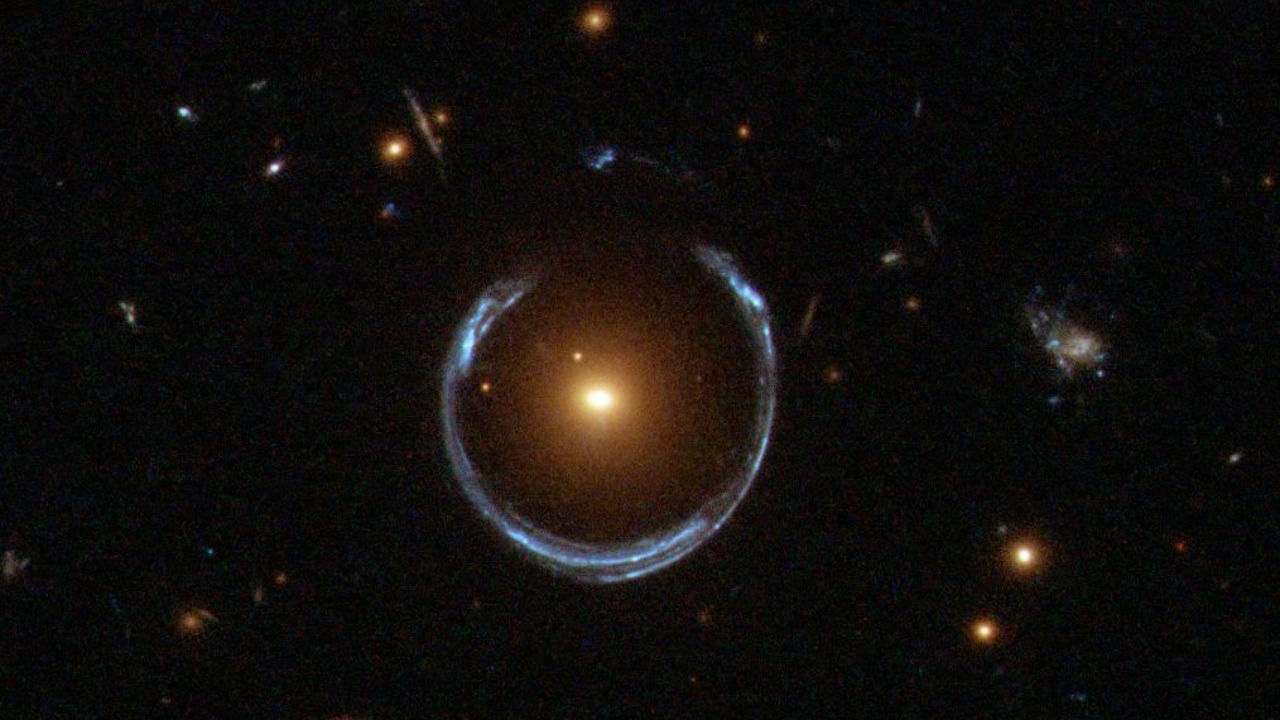
The James Webb Space Telescope (JWST) has potentially identified the universe’s first stars, formed shortly after the Big Bang, through an Einstein ring. This groundbreaking discovery includes 44 stars, known as Population III stars, which are believed to be the earliest stellar generation, composed primarily of hydrogen and helium. These findings, captured via gravitational lensing, could significantly reshape our understanding of cosmic evolution shortly after the universe’s birth around 13.8 billion years ago.
Understanding First-Generation Stars
Population III stars, often referred to as the first stars of the universe, are hypothetical entities believed to have formed from primordial gas devoid of heavier elements. This characteristic distinguishes them from later generations of stars, which were enriched by elements produced in supernovae. Predicted properties of these stars, based on models of early universe conditions post-Big Bang, suggest they were massive, with sizes up to hundreds of solar masses, and had relatively short lifespans.
The JWST has played a pivotal role in potentially confirming the existence of these stars. Its ability to observe infrared light from distant, ancient sources has allowed it to detect signals that could be attributed to these first-generation stars. This has provided researchers with a unique opportunity to study these elusive celestial bodies and gain insights into the early universe. source
The Einstein Ring Phenomenon
Einstein rings are a phenomenon of gravitational lensing where light from a distant source is bent into a ring shape by the mass of a foreground object. This effect, rooted in the principles of general relativity, occurs when the observer, lens, and source align perfectly, creating a symmetric magnification that is ideal for studying high-redshift objects.
These rings enable us to view the early universe by stretching and brightening light from objects billions of light-years away. This allows us to observe ancient celestial bodies, such as the first-generation stars, that would otherwise be too faint to detect.
JWST’s Technological Edge
Launched in 2021, the JWST’s infrared capabilities allow it to peer through cosmic dust and detect light from the universe’s first billion years. Its 6.5-meter gold-coated mirror and sensitivity to wavelengths up to 28.3 microns are crucial for observing redshifted light from primordial stars. source
The telescope is also equipped with advanced instruments like NIRCam and MIRI, which processed the data revealing potential first-generation stars. These tools have enabled the JWST to make observations that could redefine our understanding of the universe’s early history.
The Discovery Process
The observation of 44 stars near the Big Bang was made possible through gravitational lensing via an Einstein ring. This was achieved by the JWST in an early 2025 data analysis. The spectral analysis identified signatures of metal-poor stars, consistent with first-generation models lacking elements beyond hydrogen and helium. source
The specific target of this observation was an ancient star cluster magnified by the lens. This provided unprecedented resolution of structures from roughly 300 million years after the Big Bang, offering a glimpse into the universe’s early stages. source
Implications for Early Galaxy Formation
The ancient cluster observed could reveal mechanisms of the first galaxies’ assembly, linking star formation to larger cosmic structures. These stars played a significant role in seeding heavier elements through their explosive deaths, influencing subsequent galaxy evolution and the reionization of the universe. source
This discovery could lead to revisions to the standard cosmological model, including timelines for when the first stars ignited the cosmic dawn. It provides a unique opportunity to study the universe’s early history and the processes that led to the formation of galaxies as we know them today.
Challenges and Verifications
Verifying the discovery of first-generation stars presents several challenges. Distinguishing true first-generation stars from later populations contaminated by heavier elements requires precise measurements of metallicity. The new study claiming the JWST found the universe’s first generation of stars is currently undergoing peer review, emphasizing the need for confirmatory observations. source
There are also limitations to the current data, including uncertainties in redshift measurements and the rarity of perfect Einstein ring alignments for such detections. These factors highlight the need for further observations and data analysis to confirm and expand upon these groundbreaking findings.
Future Observations with JWST
Follow-up programs are planned to target similar Einstein rings in the hunt for more Population III candidates and to refine their properties. Additional data from the JWST could map the distribution of these possible oldest stars across the early universe, providing a more comprehensive picture of the universe’s early history. source
There are also potential synergies with other telescopes, such as the Hubble or upcoming missions, to cross-validate the discovery of the 44 stars near the Big Bang. These collaborative efforts could provide a more robust understanding of the universe’s first stars and their role in cosmic evolution. source
More from MorningOverview